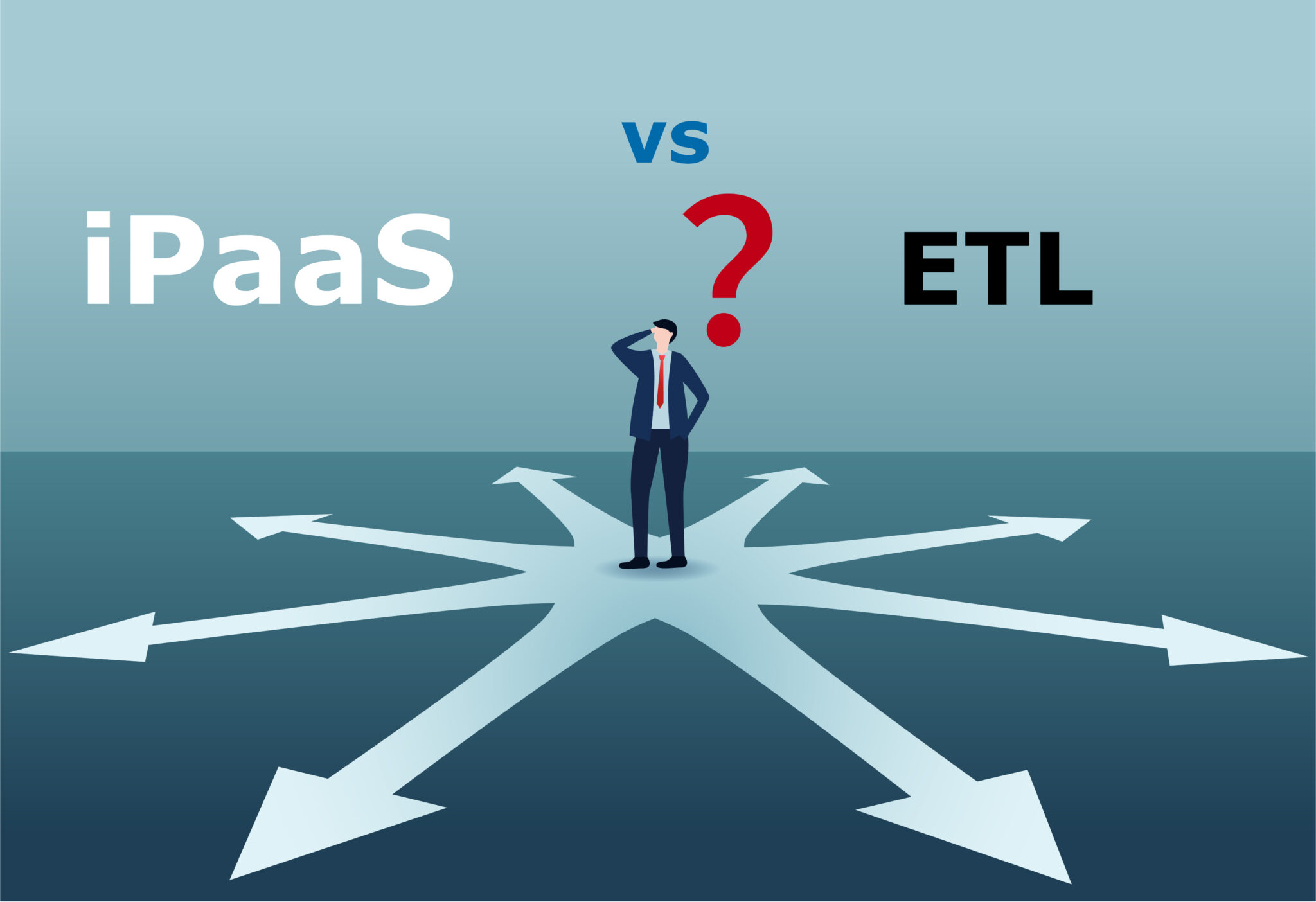
Due to the ever evolving software needs of businesses, seamless integration between various platforms is becoming more and more important. While other methods exist, two highly popular approaches to data integration are the iPaaS (Integration Platform as a Service) and the ETL (Extract, Transform, Load). While similar in goal, each approach is more suitable to some needs over others; understanding how the iPaaS vs ETL operates and what the integration needs of your business are is an important step in determining which method is best for you.
What is an iPaaS?
iPaaS, a cloud-based solution, has emerged as a powerful tool for connecting disparate applications and systems. Its user-friendly interfaces and robust capabilities make it a versatile choice for integration. Some key points of the iPaaS method include:
- Cloud-Centric: iPaaS operates in the cloud, offering flexibility and scalability to meet evolving business demands.
- Visual Interface: With drag-and-drop interfaces, iPaaS allows users to design integration workflows without extensive coding.
- Real-Time Integration: iPaaS excels in real-time data integration, ensuring up-to-the-minute information across platforms.
- Connectivity: A wide range of pre-built connectors simplifies the integration process, saving time and effort.
For a more in-depth summary, see here.
What is an ETL?
ETL, a traditional approach, has been a mainstay for managing data integration and transformation. Some key points of the ETL method include:
- Three-Step Process: ETL involves extracting data from source systems, applying transformations, and loading it into a target data warehouse.
- Flexibility: ETL supports both cloud-based and on-premises deployments, catering to different infrastructure preferences.
- Batch Processing: While ETL is often used for batch processing, real-time capabilities may be limited compared to iPaaS.
- Complex Transformations: ETL is well-suited for scenarios requiring complex data transformations before loading.
For a more in-depth summary, see here.
Key Differences
Choosing between iPaaS and ETL hinges on several crucial distinctions:
Deployment and Complexity
- iPaaS: Cloud-based deployment with simplified visual design interfaces.
- ETL: Flexibility in deployment, but often requires more intricate scripting or coding for workflows.
Real-Time vs Batch
- iPaaS: Specializes in real-time integration, ideal for time-sensitive data scenarios.
- ETL: Primarily designed for batch processing, suitable for less time-critical integrations.
Scalability and Connectivity
- iPaaS: Built for scalability, accommodating increasing data volumes and changing integration needs.
- ETL: Scalability may require more manual adjustments, connectors might need extra setup effort.
Use Cases
Understanding the strengths of each approach can aid in selecting the right fit for specific scenarios:
iPaaS Use Cases
|
ETL Use Cases
|
Challenges and Considerations
As is the case with most things in life, both iPaaS and ETL come with their own set of challenges:
iPaaS Challenges
- Data Security: Storing data in the cloud raises security concerns that need careful management.
- Latency: Real-time integration might face latency issues due to cloud infrastructure.
- Learning Curve: Mastering new iPaaS platforms requires training and familiarity.
ETL Challenges
- Infrastructure Management: On-premises ETL requires infrastructure maintenance and management.
- Real-Time Limitations: ETL’s batch-oriented nature might not meet certain real-time integration demands.
- Scalability Efforts: Manual scaling adjustments can be time-consuming.
Which Approach is Right for You?
Selecting between iPaaS and ETL depends on your brand’s unique integration needs. When deciding between the two, there are three main questions that you will need to answer:
- What is my Data Volume? iPaaS suits large data volumes and real-time requirements, while ETL is versatile for various scales.
- What is my Integration Frequency: Real-time needs favor iPaaS, whereas ETL handles less frequent integrations.
- Do I have a Cloud Strategy: If embracing the cloud, iPaaS aligns well; for mixed environments, ETL offers flexibility.
So iPaaS vs ETL?
Still unsure if an iPaaS or an ETL is best for your company? Maybe you just want to deepen your understanding of the iPaaS method? Contact the experts at MindCloud and they will be happy to answer any further questions you may have:



